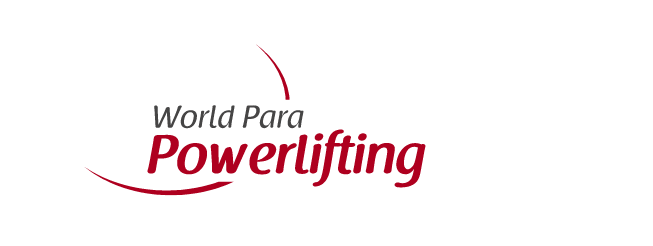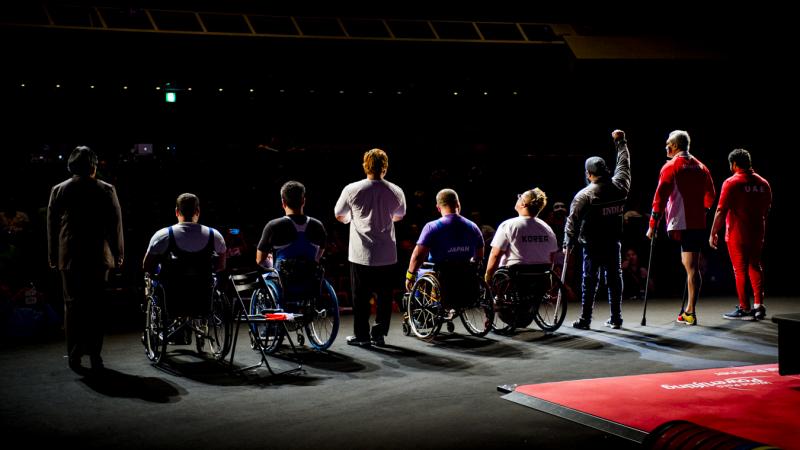CLASSIFICATION IN PARA POWERLIFTING
This is a brief overview of classification in the sport and is in no way legally binding. In all cases the sport-specific classification rules will take precedence. For further questions please contact info@worldparapowerlifting.org.
WHAT IS CLASSIFICATION?
In order to safeguard the integrity of fair competition, all Para sports have a system in place which aims to ensure that winning is determined by sporting factors such as skill, fitness, power, endurance, tactical ability and mental focus, the same factors that account for success in sport for able bodied athletes.
This system is called classification.
Through classification, it is determined which athletes are eligible to compete in a sport and how those athletes are then grouped together for competition, in order to minimise the impact of those athletes’ impairments on sport performance.
Classification is sport-specific because an impairment affects the ability to perform in different sports to a different extent. As a consequence, an athlete may meet the criteria to compete in one sport, but may not meet the criteria in another sport. Having an impairment is thus not sufficient for an athlete to compete in Para sport.
The groupings of athletes by the degree of activity limitation resulting from their impairments are called ‘Sport Classes’. This, to a certain extent, is similar to grouping athletes by age, gender or weight.
Classification across the Paralympic Movement is governed by the IPC Athlete Classification Code and Standards. More information about classification can be found here.
CLASSIFICATION IN PARA POWERLIFTING
Para Powerlifting is open to athletes with one or multiple of the eight eligible physical impairments.
All athletes have an impairment in their lower limbs or hips that meets the minimum impairment criteria to compete in Para Powerlifting.
ELIGIBLE IMPAIRMENT TYPES
All athletes in Para Powerlifting have one or more of the following impairments:
| IMPAIRMENT TYPE | dESCRIPTION |
|---|---|
| Impaired Muscle Power | Reduced force generated by muscles or muscle groups, such as muscles of one limb or the lower half of the body, as caused, for example, by spinal cord injuries, spina bifida or polio. |
| Impaired Passive Range of Movement | Range of movement in one or more joints is reduced permanently, for example due to arthrogryposis. Hypermobility of joints, joint instability, and acute conditions, such as arthritis, are not considered eligible impairments. |
| Limb Deficiency | Total or partial absence of bones or joints as a consequence of trauma, illness or congenital limb deficiency. |
| Leg Length Difference | Bone shortening in one leg due to congenital deficiency or trauma. |
| Short Stature | Reduced standing height due to abnormal dimensions of bones of upper and lower limbs or trunk, for example due to achondroplasia or growth hormone dysfunction. |
| Hypertonia | Abnormal increase in muscle tension and a reduced ability of a muscle to stretch, due to a neurological condition, such as cerebral palsy, brain injury or multiple sclerosis. |
| Ataxia | Lack of co-ordination of muscle movements due to a neurological condition, such as cerebral palsy, brain injury or multiple sclerosis. |
| Athetosis | Generally characterised by unbalanced, involuntary movements and a difficulty in maintaining a symmetrical posture, due to a neurological condition, such as cerebral palsy, brain injury or multiple sclerosis. |
SPORTS CLASSES IN PARA POWERLIFTING
There is one sport class in Para Powerlifting. All eligible athletes compete in this sport class, however competition is divided by gender and in weight categories.
FORMS AND DOCUMENTS
| Document |
|---|
| Classification Rules and Regulations |
| Classification Forms and Documents |

 Facebook
Facebook
 Instagram
Instagram
 Twitter
Twitter
 Youtube
Youtube
